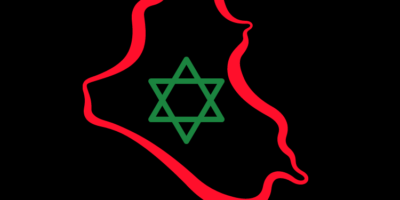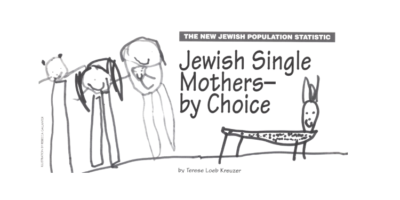
Dance Pieces Explore Issues Of Gender In Judaism
In bare feet, a black silk camisole and a crinoline, Heidi Latsky becomes the ambiguous tenth person in a minyan of nine formally dressed men davening silently with their backs to the audience. Latsky, a dancer/choreographer whose work explores ethnicity and gender through movement, recently performed a series of pieces at the 92nd Street YM-YWHA in New York City. “Recalling Jack (A Prayer for my Grandfather),” is set against a recording of her late grandfather’s voice. In this piece, Latsky enacts her exclusion from the mourning rituals for her grandfather. Her conflicted role, as a woman in intimate, “improper,” old-fashioned underclothes, is danced against the backdrop of a row of men, who leave an empty space for her worship but do not allow her to fill it. Her dance is a mix of binding, restraint, and liberation as she winds and unwinds tefillin from her arms and neck.
In program notes and audience discussion, Latsky describes, “The wearing of tefillin on the head and arms symbolically bonds the observer to God through the heart, soul and strength. Even less religious Jews wear tefillin, often during periods of mourning. Women have traditionally been excluded from this practice.”
“It’s Not What You Think,” the title piece of this show, also deals with questions of power and gender, but in a way which made the audience laugh out loud. This elegant, stylized, and comical performance set to Mozart’s Violin Concerto No. 5 is a pas de deux in collaboration with Lawrence Goldhuber, with whom Latsky has worked in the Bill T. Jones/Arnie Zance Dance Company. Latsky (standing 5’2″ tall and 100 pounds) and Goldhuber (at 6′, 300 pounds) mirror each other, dressed identically in black leather vests, black jeans, and immaculate white shirts.
What begins as a simple physical comparison, however, quickly segues into a dance of high camp and style. Balancing strength and vulnerability, Latsky and Goldhuber strike exaggerated poses which cross lines of gender and sexuality, suggesting muscle men, ballerinas, clowns, children, and courtesans. Through gentle satire and acrobatic dance, they explore the trust, love, and anger in the shifting balances of power between men and women, as well as in their own relationship.




